







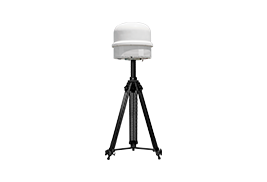





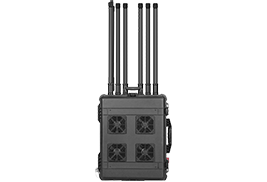
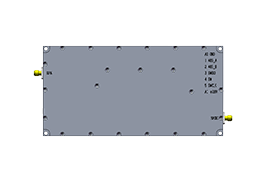
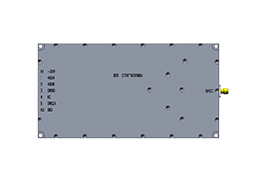
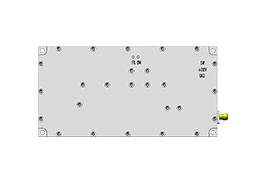







 X
X







 GLOBAL / ENGLISH
GLOBAL / ENGLISH

8.1 The Relationship Between EVM and ACPR/ACLR
It is difficult to precisely define a quantitative relationship between EVM (Error Vector Magnitude) and ACPR/ACLR (Adjacent Channel Power Ratio/Adjacent Channel Leakage Ratio). From the perspective of amplifier nonlinearity, EVM and ACPR/ACLR should be positively correlated: AM-AM and AM-PM distortion in amplifiers will increase EVM and are also the main sources of ACPR/ACLR.
However, EVM and ACPR/ACLR are not always positively correlated. A typical example can be found in the Clipping technique commonly used in digital IF (Intermediate Frequency). Clipping reduces the Peak-to-Average Ratio (PAR) of the transmitted signal, which helps to lower ACPR/ACLR after the power amplifier. However, Clipping simultaneously degrades EVM because limiting (windowing) or filtering methods damage the signal waveform, thereby increasing EVM.
8.2 Origin of PAR
The Peak-to-Average Ratio (PAR) of a signal is typically represented using statistical functions such as the CCDF (Complementary Cumulative Distribution Function). The CCDF curve describes the relationship between the signal power (amplitude) values and their occurrence probability. For example, if the average power of a signal is 10 dBm, and the statistical probability of power exceeding 15 dBm is 0.01%, then the PAR can be considered as 5 dB.
PAR is an important factor affecting the spectral regeneration (such as ACLP/ACPR/Modulation Spectrum) of the transmitter in modern communication systems. Peak power pushes the amplifier into a nonlinear region, causing distortion. Typically, the higher the PAR, the stronger the nonlinearity.
In the GSM era, due to the constant envelope characteristic of GMSK modulation, the PAR is zero. Therefore, in designing GSM power amplifiers, they are typically pushed to the P1dB point to achieve maximum efficiency. However, with the introduction of EDGE, the 8PSK modulation no longer has a constant envelope characteristic, so the average output power of the power amplifier is usually pushed to about 3 dB below the P1dB point because the PAR of the 8PSK signal is 3.21 dB.
9. Overview of Interference Metrics
Here, we discuss sensitivity tests under various interference conditions, in addition to the static sensitivity of the receiver. It is fascinating to study the origins of these test metrics.
Common interference metrics include Blocking, Desense, and Adjacent Channel Selectivity.
9.1 Blocking
Blocking is an ancient RF metric that existed early in radar invention. Its principle involves injecting a large signal into the receiver (typically affecting the first-stage low-noise amplifier the most), pushing the amplifier into a nonlinear region or saturation state. At this point, the amplifier's gain drops sharply and produces strong nonlinear effects, making it unable to amplify the useful signal properly.
Another scenario that can cause blocking is through the receiver's Automatic Gain Control (AGC): when a large signal enters the receiver chain, the AGC dynamically adjusts the gain to ensure dynamic range; meanwhile, if the useful signal level is low, the lack of gain results in insufficient amplitude of the useful signal entering the demodulator.
Blocking metrics can be divided into in-band and out-of-band because RF front-ends usually have band-pass filters that suppress out-of-band blocking. Whether in-band or out-of-band, blocking signals are usually pure tone signals without modulation. In reality, there are hardly any pure tone signals; engineers often simplify them as pure tones to (approximately) replace various narrowband interference signals.
To address blocking issues, it mainly involves improving the receiver's output, which means enhancing the third-order intercept point (IIP3) and expanding the dynamic range. For out-of-band blocking, the suppression effect of filters is also crucial.
9.2 AM Suppression
AM Suppression is unique to the GSM system. From its description, the interfering signal is similar to the GSM signal, both being TDMA signals, synchronized with the useful signal, and having a fixed delay.
This situation simulates signals from adjacent cells in the GSM system. Considering the frequency offset requirement for the interfering signal is greater than 6 MHz (GSM bandwidth is 200 kHz), this is a typical configuration of adjacent cell signals. Therefore, AM suppression reflects the GSM system's tolerance to interference from adjacent cells in actual operation.












